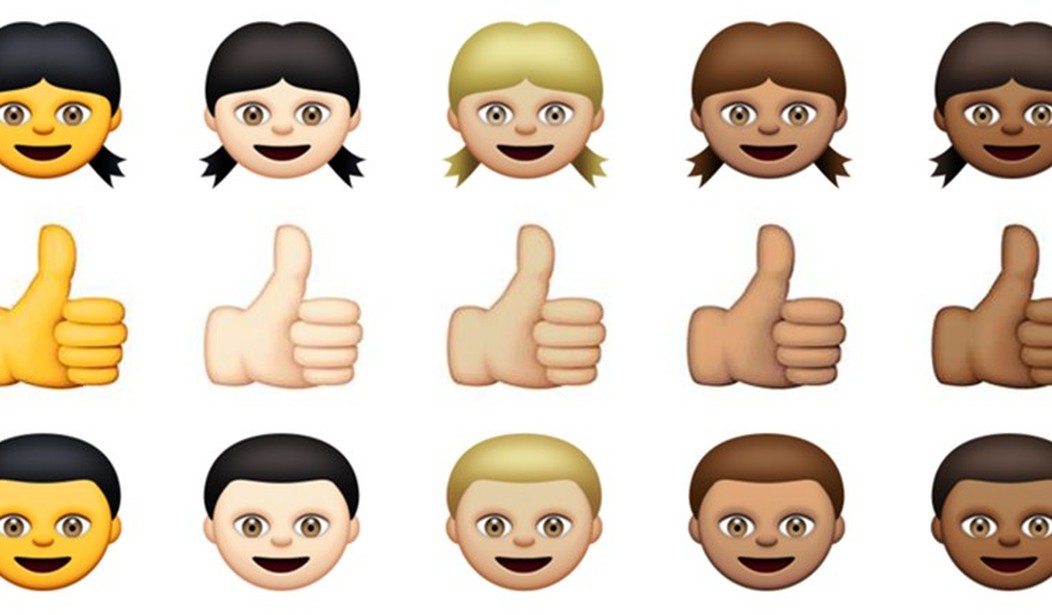Race Wokeism now extends to emojis — because it’s not enough to obsess about skin color (and other external attributes) in the real world. The virtual world must also be corrupted by the same sick obsession with race — by people who claim to be “fighting racism.”
People like NPR writer Alejandra Marquez Janse — who thinks that figuring out which emoji is racially correct for each application is “more complex than you think.”
Which of course, it is … because of people like Janse and her co-author, Asma Khalid. A simple cartoon image of a thumbs up or down must now be shaded exactly to match the skin color of the sender. This is part of a “conversation about race and identity” that people like Janse and Khalid seem unable to stop conversing about.
Perhaps because if they did, they’d have nothing else to converse about. And that silence would be as deadly to the writing careers of people like Janse and Khalid as the Cuomo brothers have been to CNN’s ratings.
“In 2015, five skin tone options became available for hand gesture emojis,” the pair carefully explain. “Choosing one can be a simple texting shortcut for some but for others it opens a complex conversation about race and identity.”
Yikes, this is some wacko stuff.
Is there — could there possibly be — anything less ”complex” than a cartoon thumbs-up image?
I like this.
Traditionally rendered in cartoon yellow — to convey the sentiment without the additional race-freight. Which freight must be added — so that there is a need for “conversation.”
Related: Wokeness Emphasizes Race as Much as the ‘White Supremacists’ It Claims to Combat
The pair quote Andrew McGill of The Atlantic, who found that “some white people may stick with the yellow emoji because they don’t want to assert their privilege by adding a light-skinned emoji … ”
As opposed to just wanting to send a thumbs-up text — and that’s all there is to it.
If Janse and Khalid were genuinely interested in a “conversation” not based on race, they’d have written an article in praise of the racially neutral Simpsons’ yellow thumbs-up symbol, which says the same thing in every language and regardless of the color of the sender’s skin.
But Janse and Khalid want emojis to say other things. Or believe they do, sub rosa.
So do some texting Wokesters quoted in the NPR piece, including someone identified as Sarai Cole who “identifies” as “black and an American descendant of slavery.” She told Janse and Khalid that she is “confused” when friends who aren’t black or American descendants of slavery text her using the brown emoji thumbs up — which they are apparently not supposed to use. Janse and Khalid do not ask Cole why her friends should not be able to “identify” as whatever they wish — a cardinal tenet of identity theory. Or, for that matter, why she — a black American descendant of slavery — uses the brown emoji.
Isn’t that … cultural appropriation?
Then again, if a former chapter head at the NAACP, Rachel Dolezal — who is white — can “identify” as black (so as to advance her career at the expense of actual black people) then how can Cole object to her brown friends “identifying” as whatever color they like — and emoji’ing accordingly?
That would make things simpler. Let people use whatever color emoji they like — for whatever reasons they like. Some people like green. Or red. It doesn’t need to mean anything more than that.
But — unsurprisingly — Cole sees something sinister in that.
“I think it would be nice if it is their default,” she explains to Janse and Khalid. “But if they’re just using it with me or other brown people I would want to look into that deeper and know why they’re doing that.
Of course. There must always be a why. And it must always be some deep-seated, pathologically poisonous racial reason. It can’t just be a cartoon image of a thumbs up.
It’s why Jennifer Epperson — who also “identifies” as black (though she could be brown or white or perhaps even candy-cane red and green) told Janse and Khalid that “she changed her approach (to picking emoji colors) depending on who she was talking to,” defined as follows:
“I use the default emoji — the yellow-toned one — for professional settings and then I use the dark brown emoji for friends and family,” explaining that she doesn’t “… have the emotional capacity to unpack race relations in the professional setting.”
Which “unpacking” is a necessity of her own creation.
Most people don’t see race when they see an emoji. They see a symbol of a sentiment, a convenient shorthand for expression. According to the logic of Epperson, Cole, and the Race Wokesters of NPR, we’ll need black, brown and every other conceivable shade of the rainbow for heart symbols, too. Not just red — because that leaves out everyone except American Indians.
Whoops — native Americans and other indigenous peoples.
It’s arguably just as “confusing” for people who don’t fall into either of those two racial boxes to use red hearts to convey the sentiment, I love you, as it is for people who aren’t brown to use black thumbs-up emojis when they ought to be using a less “confusing” emoji.
Actually, it’s just insane — a simpler way to understand (and dismiss) this whole sorry race-obsessed business.
People who can’t just send a thumbs up — or an I love you — without “unpacking race relations” might stop to consider that if this is all that’s left of “racism” in America, it might be time to start “unpacking” something else.
Beginning with themselves.









Join the conversation as a VIP Member